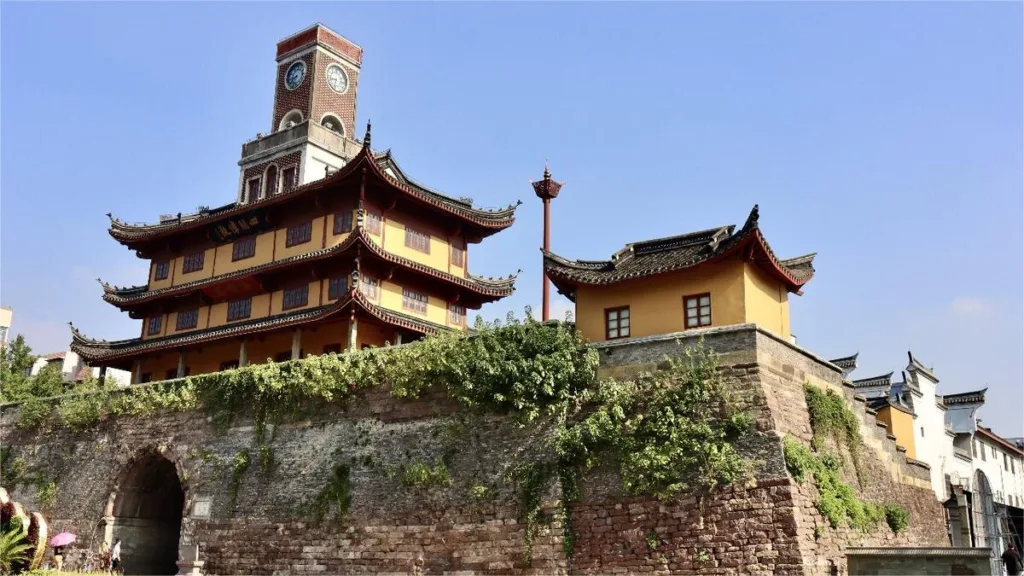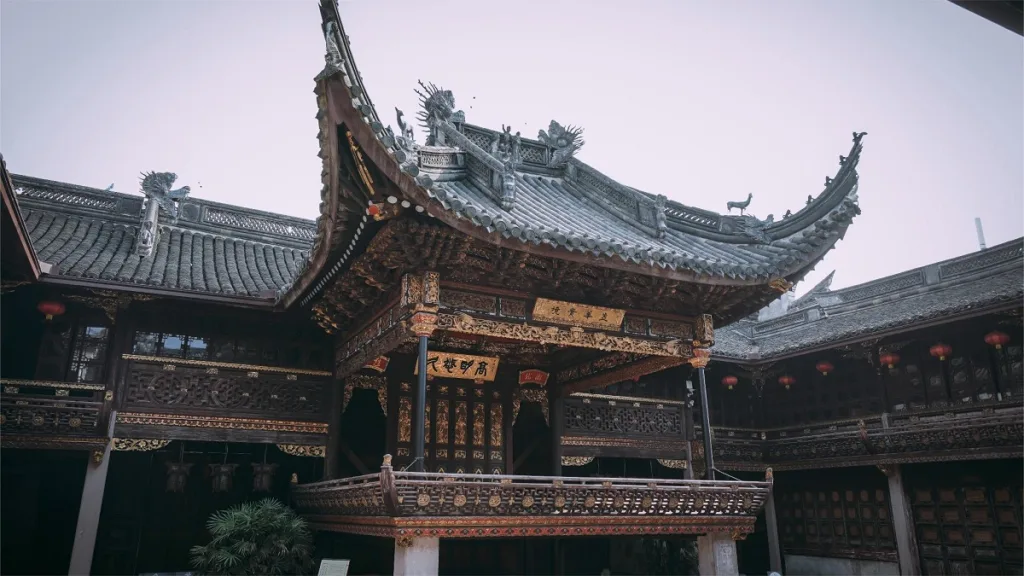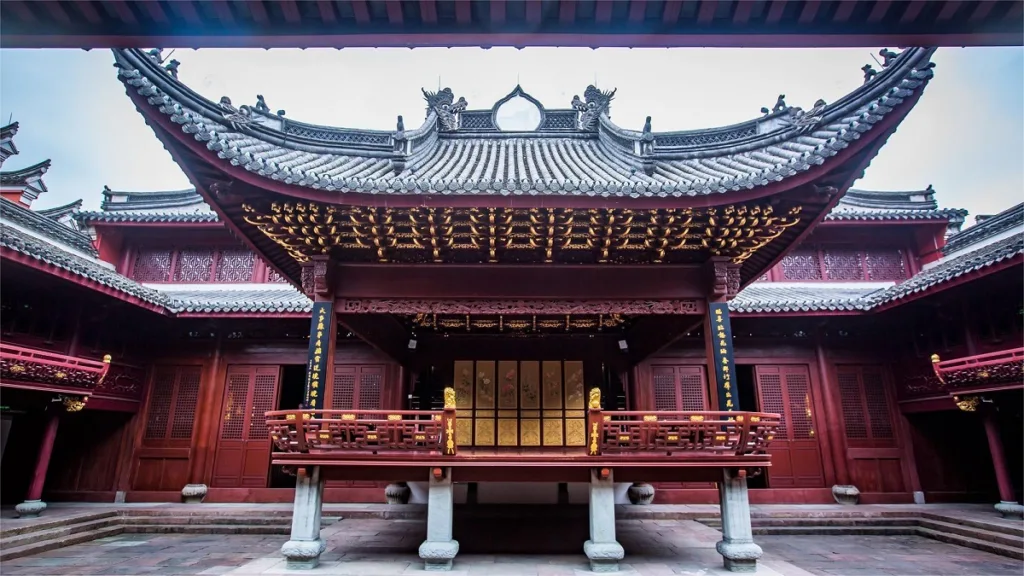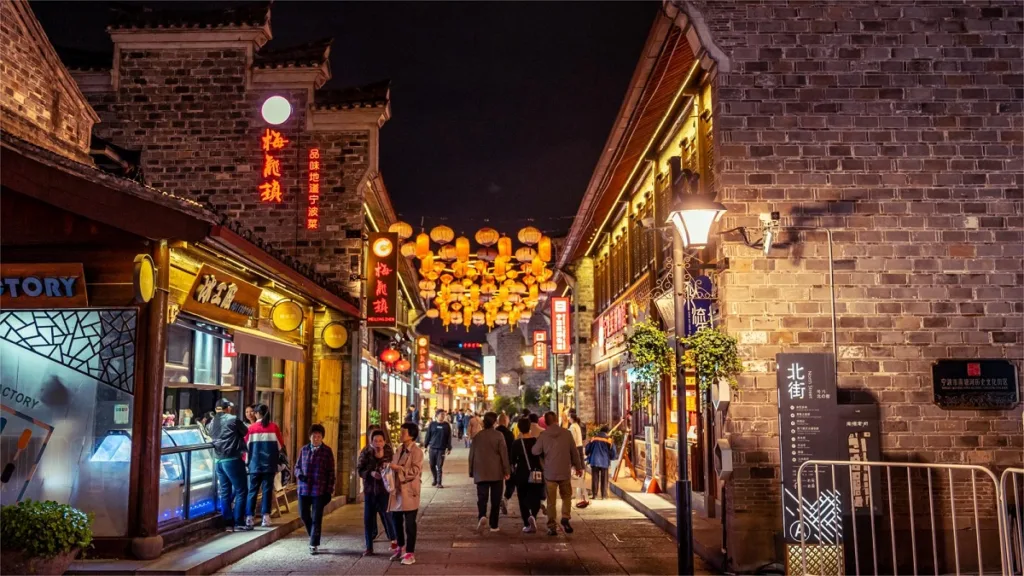Tianfeng Pagoda (天封塔), located in Ningbo, China, is a towering symbol of ancient maritime navigation and architectural prowess. Its name, “Tianfeng,” derives from the era in which it was constructed during the reign of Empress Wu Zetian of the Tang Dynasty, between the years 695 and 696. The pagoda stands approximately 51 meters tall, comprising 14 tiers in a hexagonal structure, with seven visible tiers and seven hidden ones, including a subterranean chamber.
Originally serving as a beacon for seafarers navigating the waters of the ancient Mingzhou Harbor, Tianfeng Pagoda holds a rich history marked by resilience and transformation. Legend has it that its construction involved layering mud and sand incrementally, followed by the placement of bricks and stones, until each tier was completed, after which the surrounding mud and sand were removed. The remnants of this process left behind significant amounts of sediment, giving rise to the adjacent streets still known today as “Dashani Street” and “Xiaoshani Street.”
Table of Contents
- Basic Information
- Location and Transportation
- History of Tianfeng Pagoda
- Vlog about Tianfeng Pagoda
- Attractions near Tianfeng Pagoda
Basic Information
| Estimated Length of Tour | 30 minutes |
| Ticket Price | 5 RMB to ascend the pagoda |
| Opening Hours | 8.30 – 16.00 |
| Telephone Number | 0086-0574-87302635 |
Location and Transportation
Tianfeng Pagoda is located at the intersection of Dashani Street West and Jiefang South Road in the Haishu District of Ningbo City, Zhejiang Province. To get there, you can choose one of the following ways:
Bus: Take bus 134, 513, 809, or 906 and get off at Tianfeng Pagoda Stop (天封塔站).
Metro: The closest metro station to Tianfeng Pagoda is Chenghuang Temple (城隍庙) on line 2. After getting out of the station from Exit C, you will see the pagoda right in front of you.
History of Tianfeng Pagoda
The pagoda’s architectural evolution reflects the challenges and triumphs of its journey through time. Initially built as a modest quadrangular tower during the Tang Dynasty, Tianfeng Pagoda’s height was limited due to the constraints of the era, with resources and technology insufficient for erecting towering structures exceeding 30 meters. The architectural style of the Tang Dynasty favored quadrangular pagodas, aligning with the original design of Tianfeng Pagoda.
However, during the Southern Song Dynasty in the year 1144, Tianfeng Pagoda underwent a significant transformation. Rebuilt as a hexagonal pagoda, it stood as a testament to the architectural advancements of the era. Historical accounts describe it as a complete hexagonal structure, towering eighteen zhang high, showcasing the architectural splendor of the Song Dynasty.
Despite the grandeur of its Song Dynasty incarnation, Tianfeng Pagoda faced adversity in the centuries that followed. Ravaged by fire during routine maintenance in the third year of the Jiaqing Emperor’s reign in 1798, much of the pagoda’s upper structure, including the eaves, platform, and railings, succumbed to the flames, leaving only the brick masonry tower standing. In this state of disrepair, Tianfeng Pagoda stood as a stark reminder of its former glory, enduring through subsequent centuries with minor repairs and constant lean.
It wasn’t until the modern era that Tianfeng Pagoda underwent a remarkable restoration. In 1984, the municipal government of Ningbo embarked on a project to restore the pagoda to its former grandeur. Drawing upon archaeological findings of a Southern Song Dynasty model, experts meticulously reconstructed Tianfeng Pagoda to replicate its original hexagonal form. The restoration, completed in December 1989, stands as a testament to the enduring legacy of Tianfeng Pagoda and its significance in Chinese architectural history.
Today, Tianfeng Pagoda continues to stand as a cultural landmark, embodying the resilience of the human spirit and the enduring legacy of ancient Chinese craftsmanship. Its majestic presence serves as a reminder of Ningbo’s rich maritime heritage and its enduring connection to the sea. As visitors gaze upon its towering silhouette, they are transported through the annals of time, bearing witness to the stories etched within its weathered walls.







